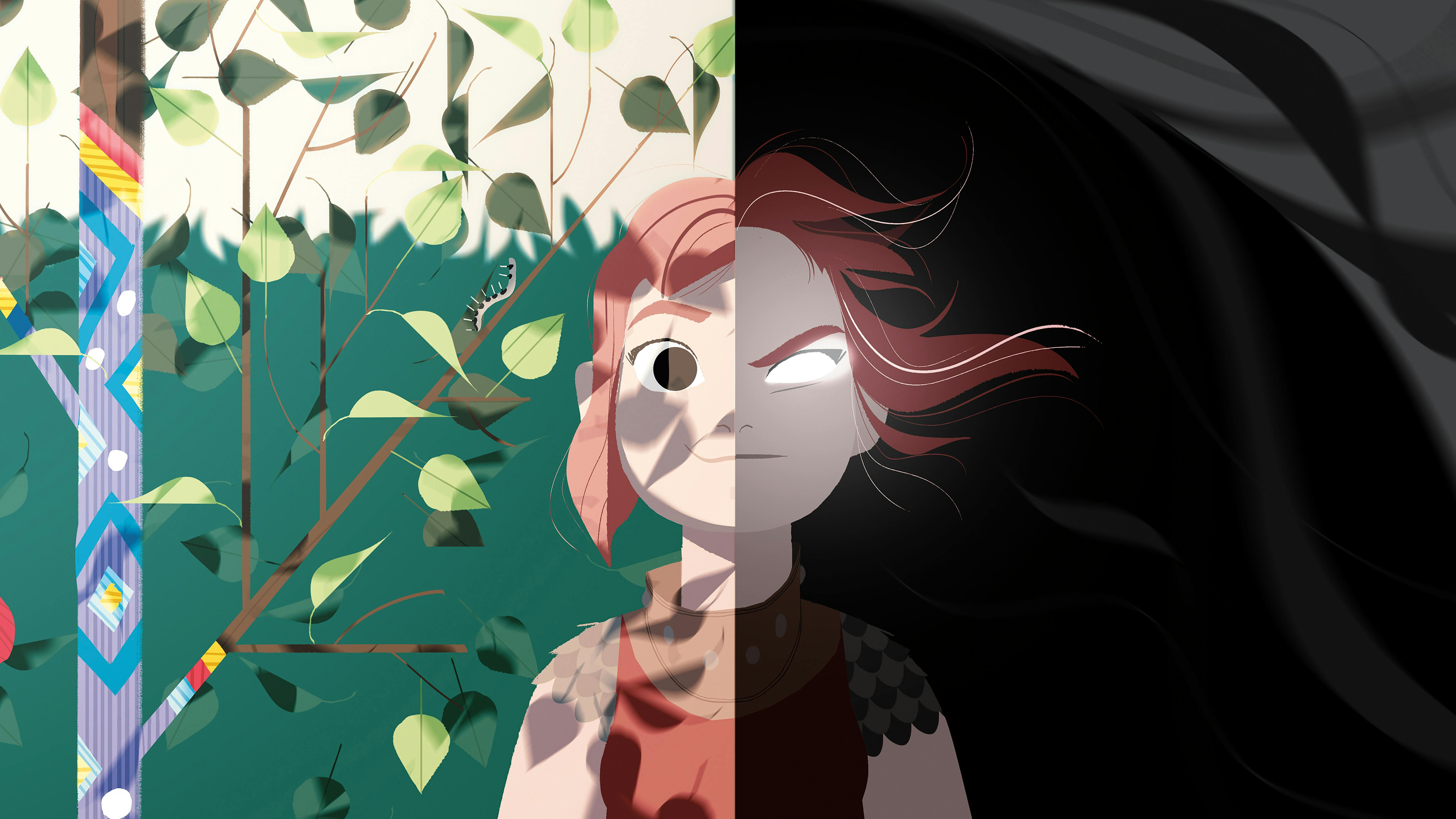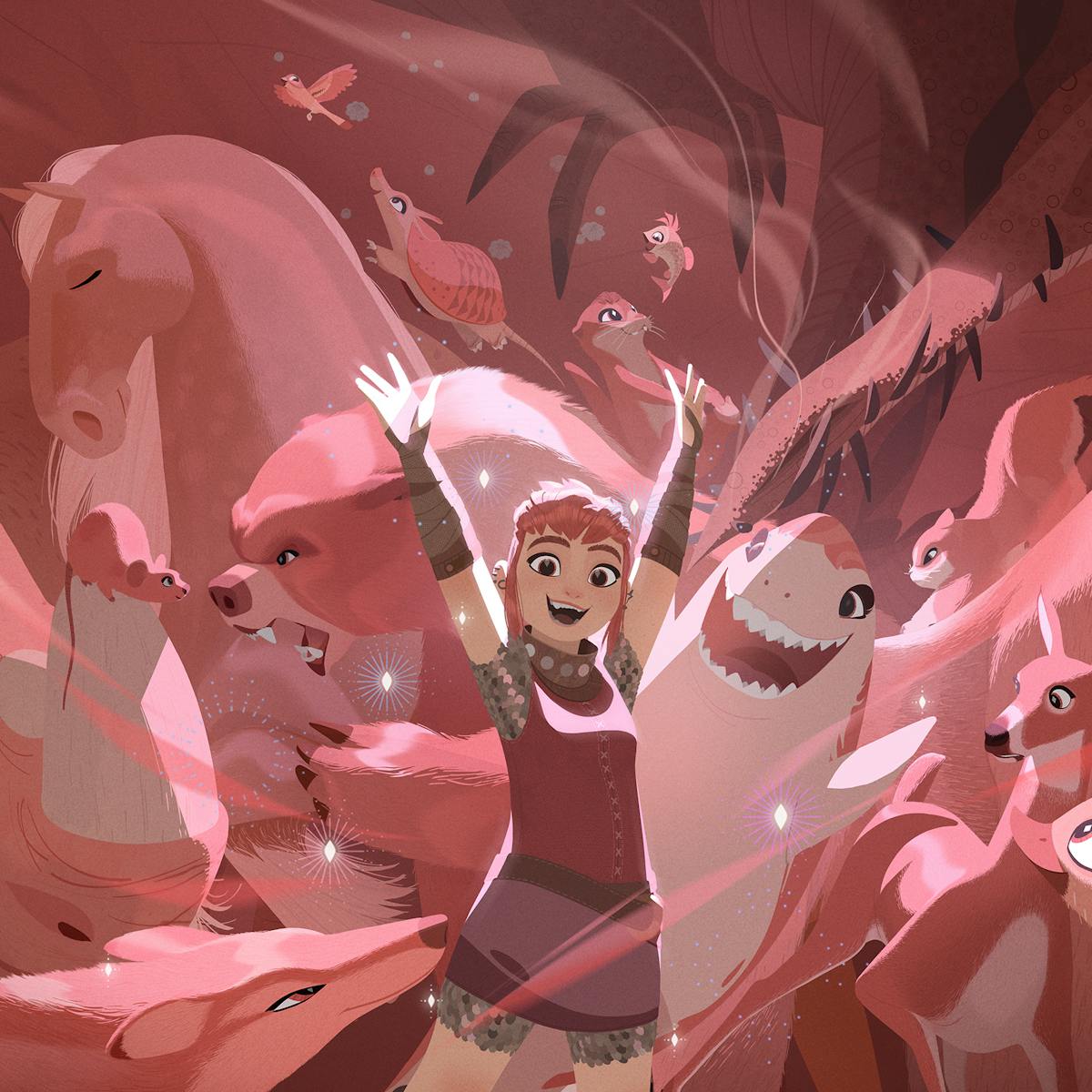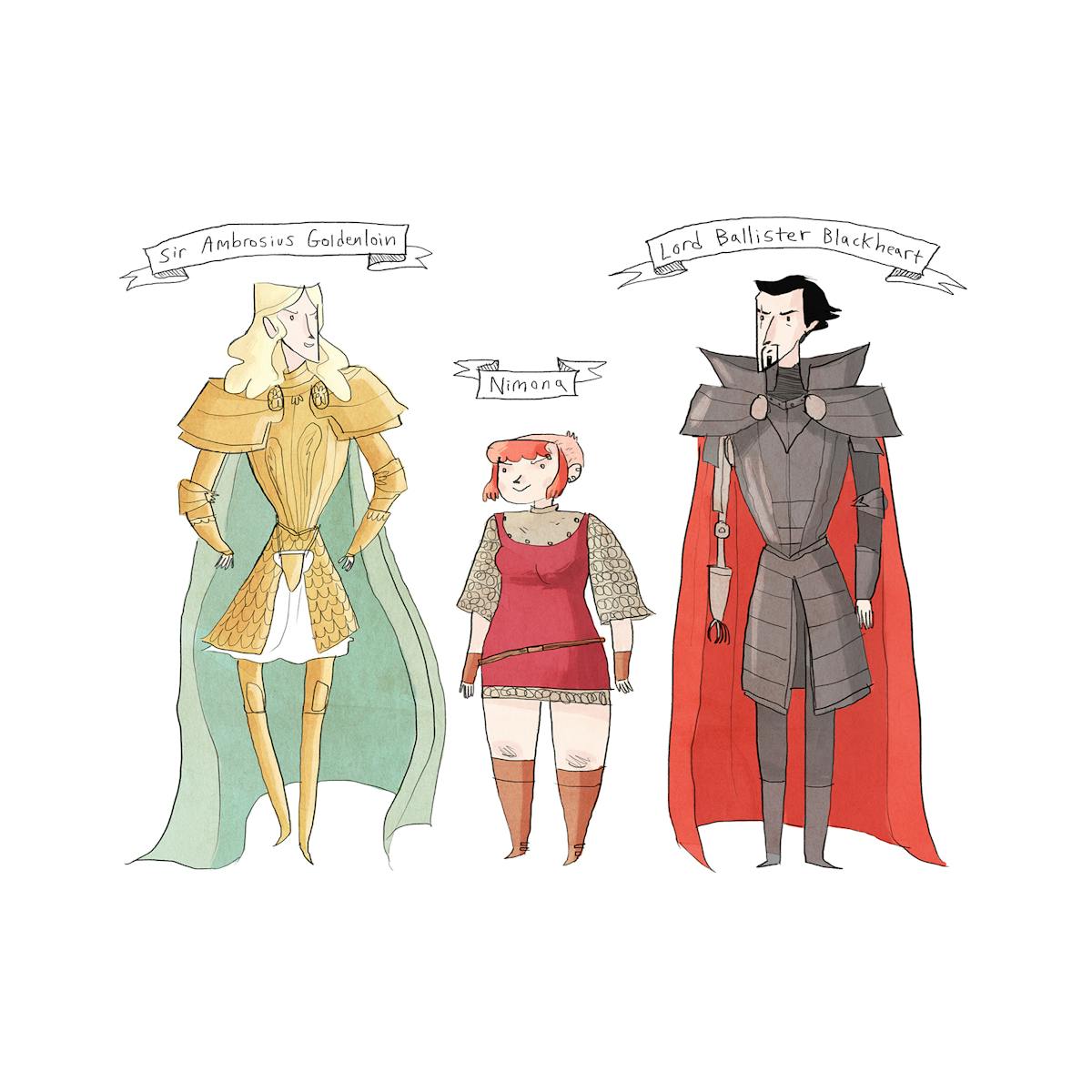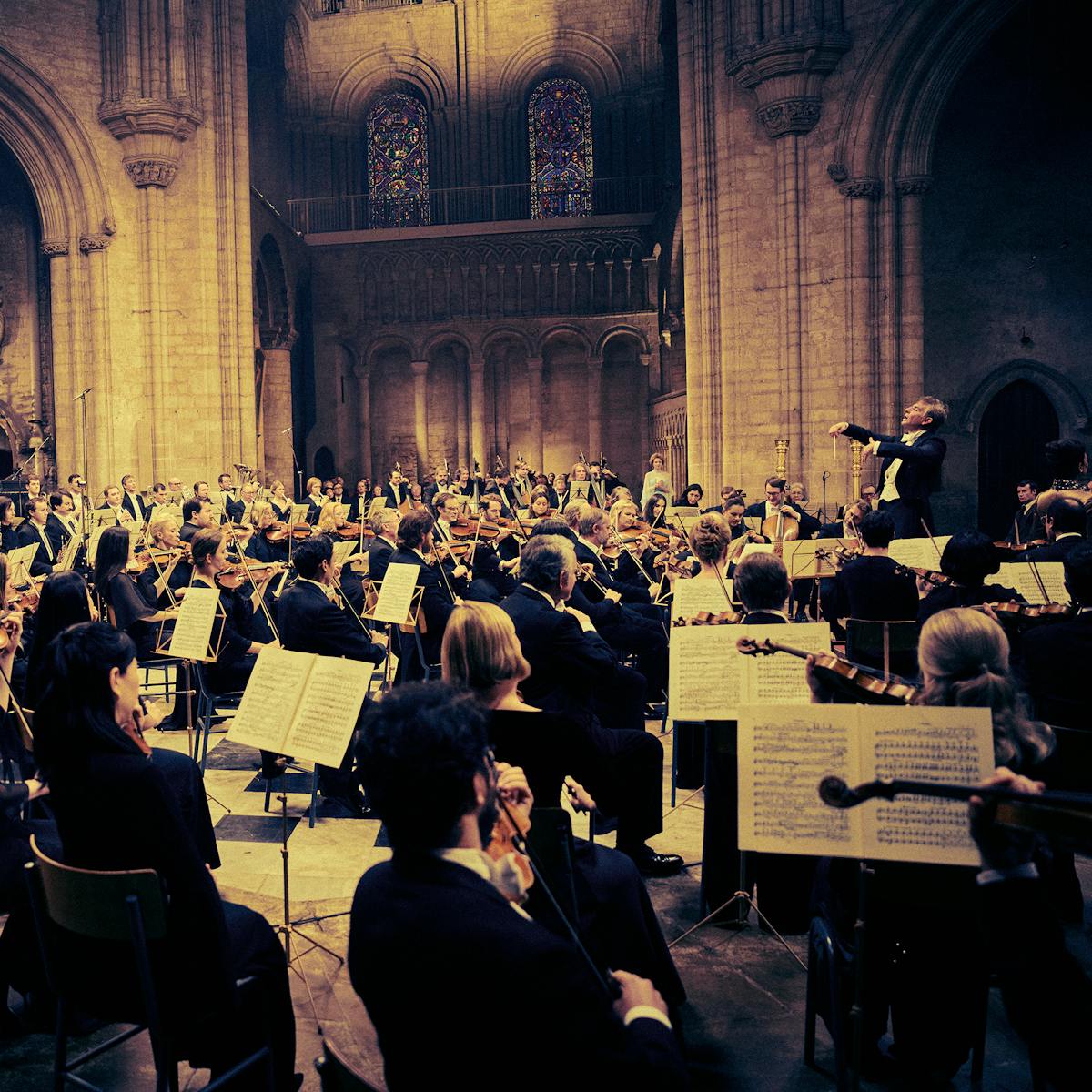When directors Nick Bruno and Troy Quane partnered with production designer Aidan Sugano to adapt ND Stevenson’s Nimona for the screen, the trio agreed on a vision that would remain true to the anarchic heart of the title character. Nimona (Chloë Grace Moretz) is a centuries-old shapeshifter who, after a painful personal betrayal, has lived alone as a teenage outsider, skirting the fringes of a great, walled kingdom. After a disgraced knight, Ballister Boldheart (Riz Ahmed), is framed for murdering the queen, Nimona decides to become his sidekick, helping him to prove his innocence while on the run from the director of the corrupt police force.
“We knew that it could not be a caricature, it could not feel like Disneyland, it could not feel like a theme park,” Sugano, who worked with co-designer Jeff Turley, says of the story and the unusual setting where it unfolds. “It needed to feel like a grounded, real place where people have lived and died for generations.”
Hewing closely to the world of Stevenson’s imagination, the filmmakers created a uniquely engaging environment that combined medieval and futuristic elements, using both 2D and 3D animation to vividly bring the kingdom and its colorful inhabitants to the screen. Bruno, Quane, and Sugano recently spoke to Queue about what motivated some of their boldest artistic choices, and how they sought to celebrate themes of understanding and acceptance at every turn.
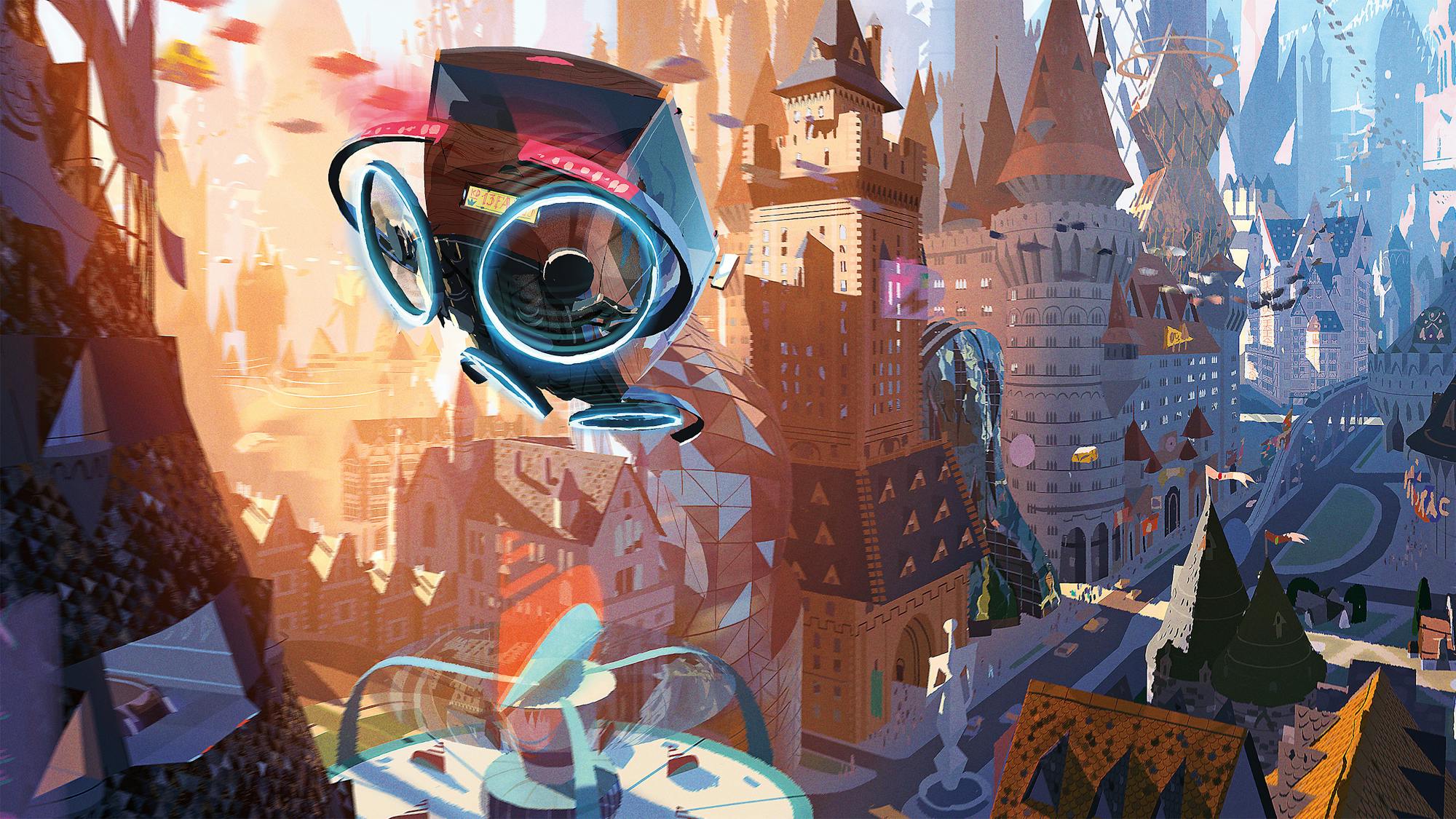
A flying buggy soars over the kingdom in this world-building exploration drawing by James Gilleard
Blending 2D and 3D
Aidan Sugano: In the early days, there was a pretty strong desire to do something that used the look of the 2D space and that language we are all used to and all grew up with. But then we also wanted to use it in a way that subverted the [audience’s] expectations and played with them. We wanted to make sure that tonally, the visuals were tied to showcasing the theme of the film in every aspect.
When we decided that we needed to use that classic 2D animation language, we pretty quickly had to figure out what that actually meant. Some of the [references] like [artist and illustrator] Eyvind Earle, and all of the Sleeping Beauty stuff [he hand-painted and designed for the 1959 Walt Disney film] from those early days were super, super important. But we needed a broader reference pool to pull from. So that led us to another of his contemporaries, Charley Harper, because they shared a similar [sensibility]. Since all of that was so 2D based, translating that into the 3D space [meant] we had to reengineer everything from scratch.

Ballister Boldheart (Riz Ahmed) and Nimona (Chloë Grace Moretz) shapeshifting into a shark
Shaping Nimona
Troy Quane: We designed a lot of Nimona’s shapeshifts to make them a little less cartoony and a little bit more true to the animals’ shapes [that she’s adopting]. For Nick and [me], it was figuring out a story we could tell with these characters in this world that we believed in.
Nick Bruno: We made a point to say that Nimona doesn’t just turn into things to turn into things. It comes from a feeling, it comes from a real place, out of necessity. When she turns into a gorilla, it’s because she feels she needs to be big, powerful, and even more protected. It’s not like a magic act.
Quane: We’ve got a backstory for Nimona [in the film], but I think it’s still just the tip of the iceberg for who she is. In her natural shape, she’s got no shape. It is just this elemental sort of creature looking for somebody else to connect to. And there was this idea we really loved: that Nimona’s greatest moment of connection in her past also became her greatest moment of pain. [As we see in the flashback] it’s why she stuck around for a thousand years — because maybe she could find that again.
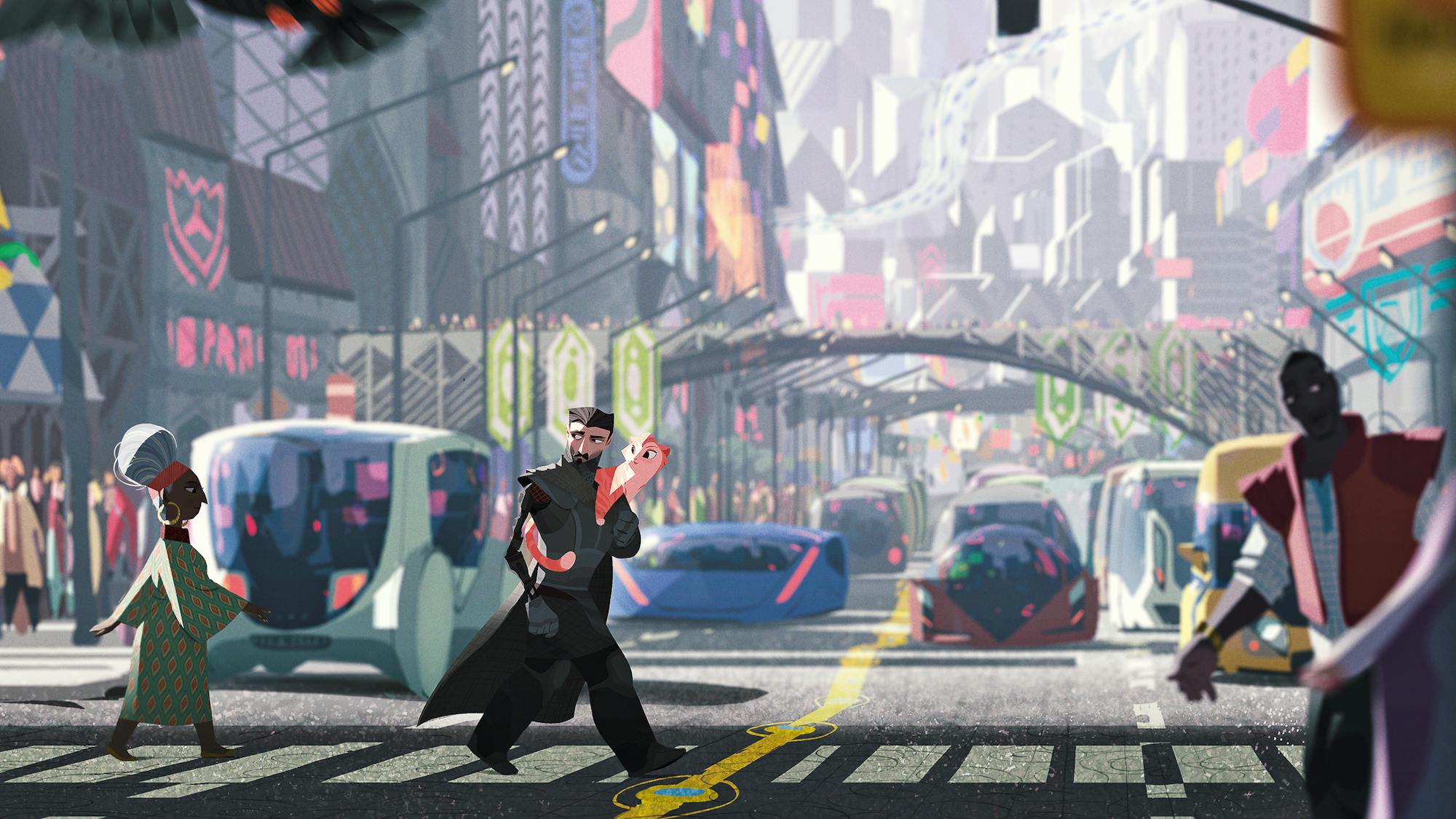
Nimona (Chloë Grace Moretz) as a cat and Ballister Boldheart (Riz Ahmed) in this moment painting by Assaf Horowitz
Architectural Digest
Sugano: I’m sure someone could take the pages and pages of dissertation-level documentation of all of our justifications for the socioeconomic situation in this kingdom. [Ultimately] all of that stuff had to fall into the background and be felt and not seen, because if it distracted from the characters, then we didn’t do our job. It was a dream job because I got to put on my super nerd hat and be like, “Okay, how were medieval towns built? What were the specific architectural limitations, and then how can we translate those into this fantastical space?”
So we have a cloistered society. It’s locked its doors and said, “No one can leave; no one can come in.” What does that kind of mentality do to the cultural evolution of a place? A lot of times when you have those kinds of isolated, highly militaristic societies, technology progresses really fast and culture stagnates a little bit. The evolution of our kingdom was dictated by a lot of those principles.
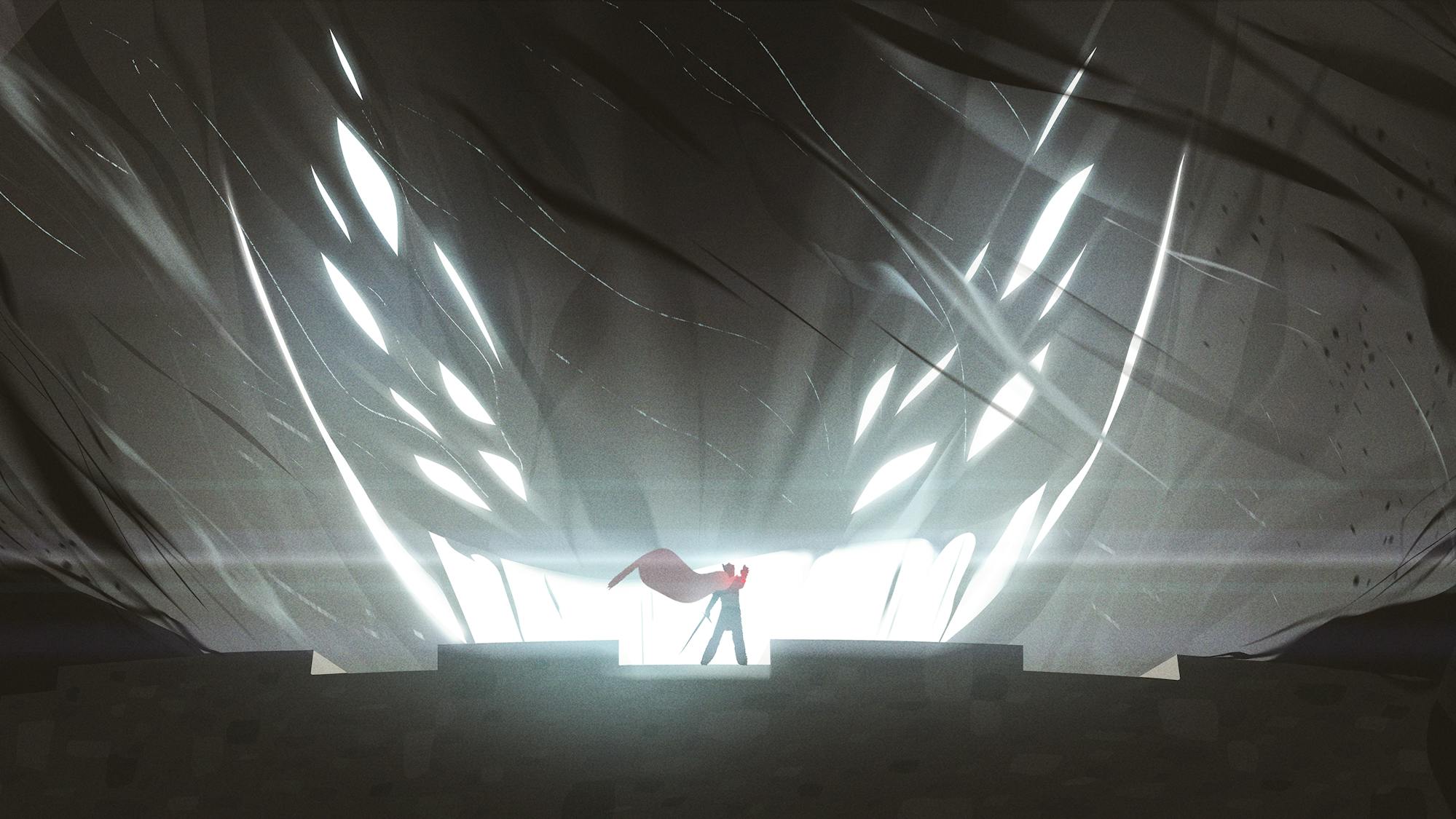
Nimona (Chloë Grace Moretz) as a shadow monster and Ballister Boldheart (Riz Ahmed) in this moment painting by AIdan Sugano
Light versus Shadow
Sugano: We had this phrase [that was our guiding principle on the production]: True acceptance is seeing someone for who they are. We used light and shadow as a visual representation of that. So our characters’ compositions were designed to explicitly showcase their relationships to acceptance at that specific moment in time in the film.
Light represented acceptance and shadow represented non-acceptance. But also there was this duality where light could also represent exposure. Because when you are pushed into that space and showing yourself for who you are, you are also putting yourself out in that light of exposure, and it is potentially uncomfortable. Nimona is a perfect example. At her lowest point of the film, she literally becomes a shadow creature who consumes light and turns into the epitome of this non-acceptance.
Bruno: The whole shadow monster [represents] a broken heart. So the heart is this fiery bit of light that is being swallowed by all this darkness and all this shadow.
Sugano: When she finally is seen by Ballister, she explodes into a star that is just spreading nothing but acceptance in that light.
